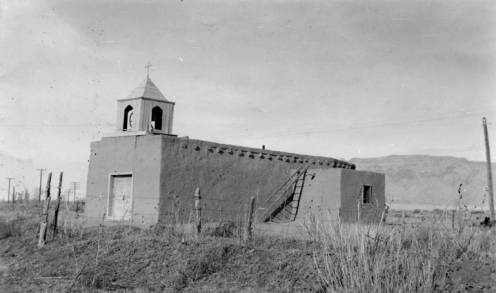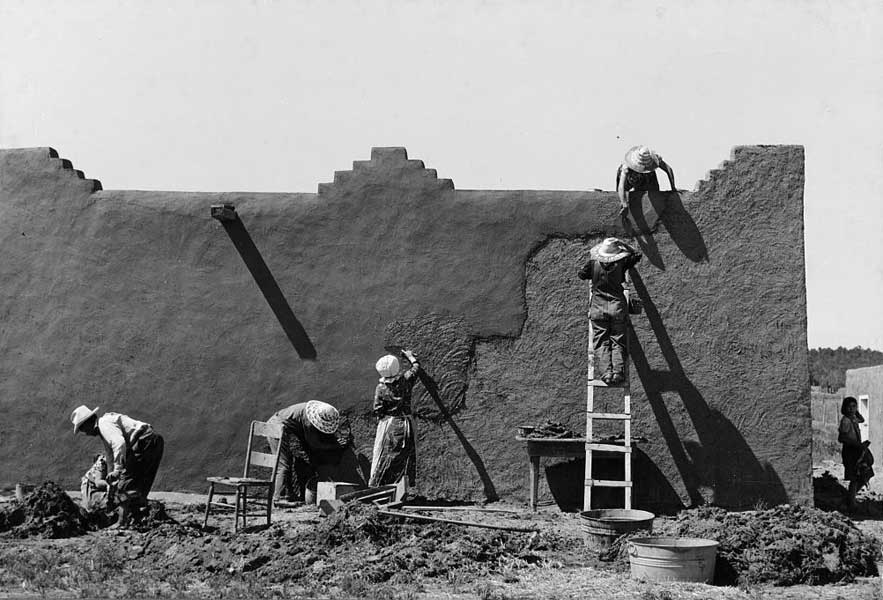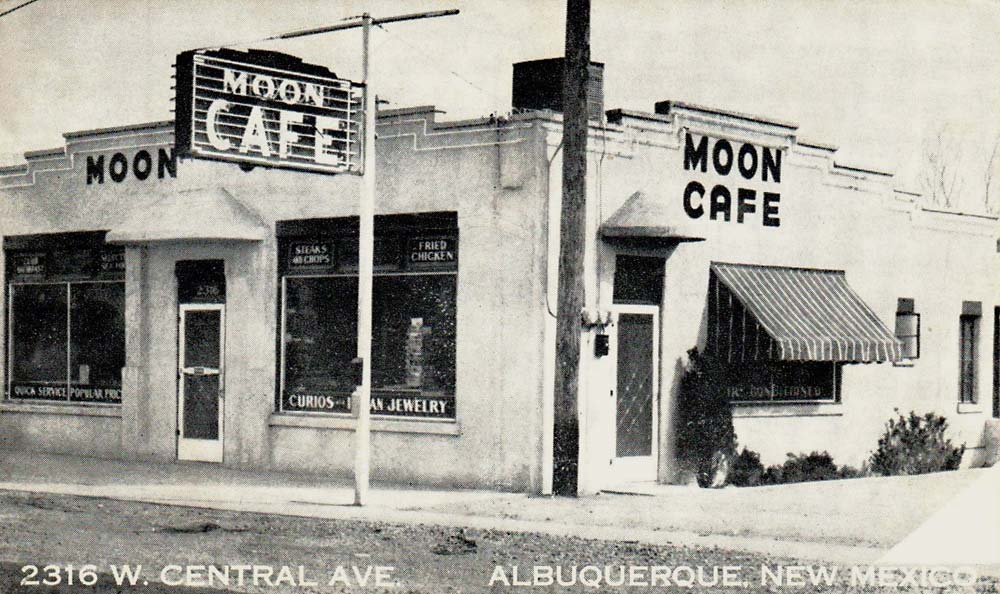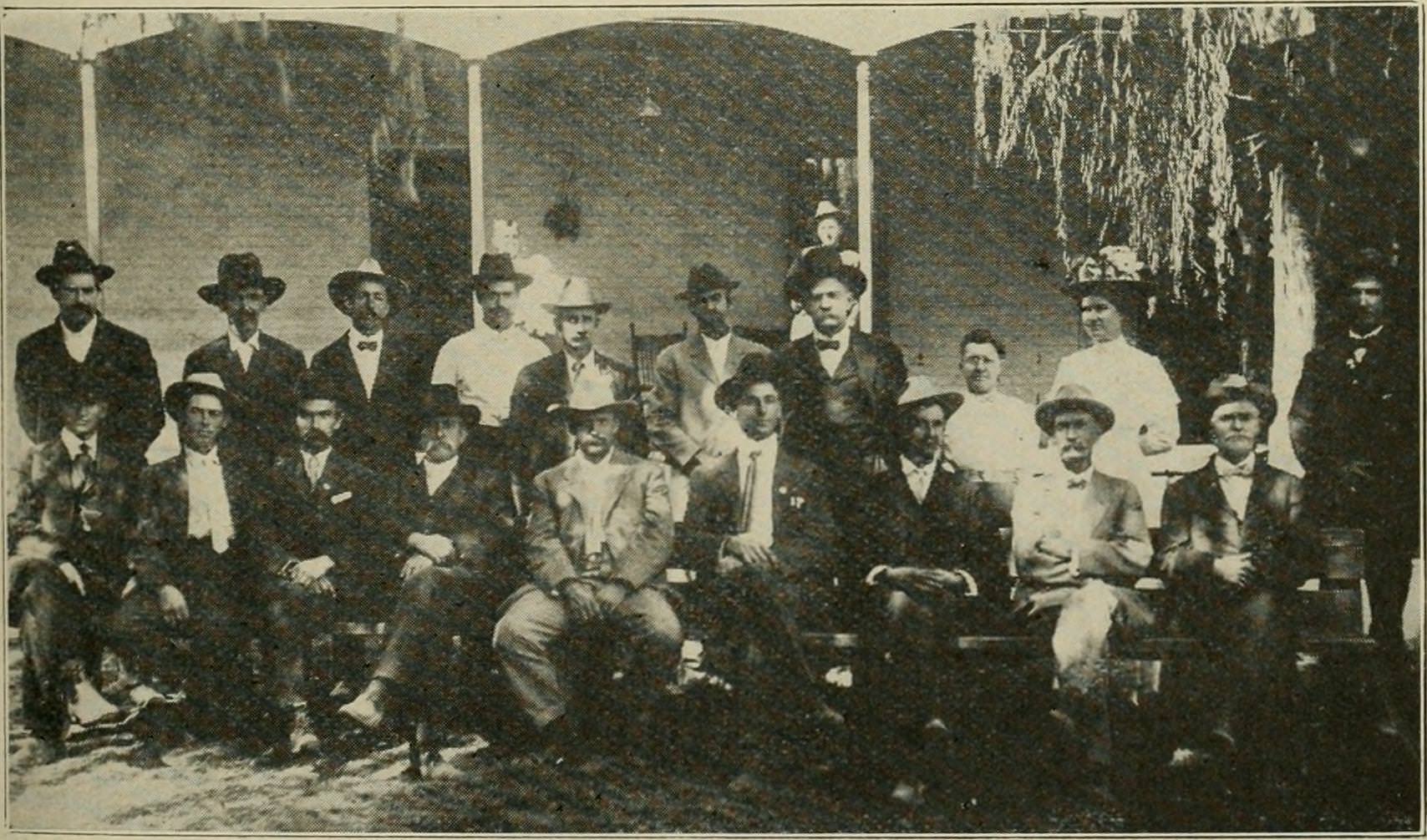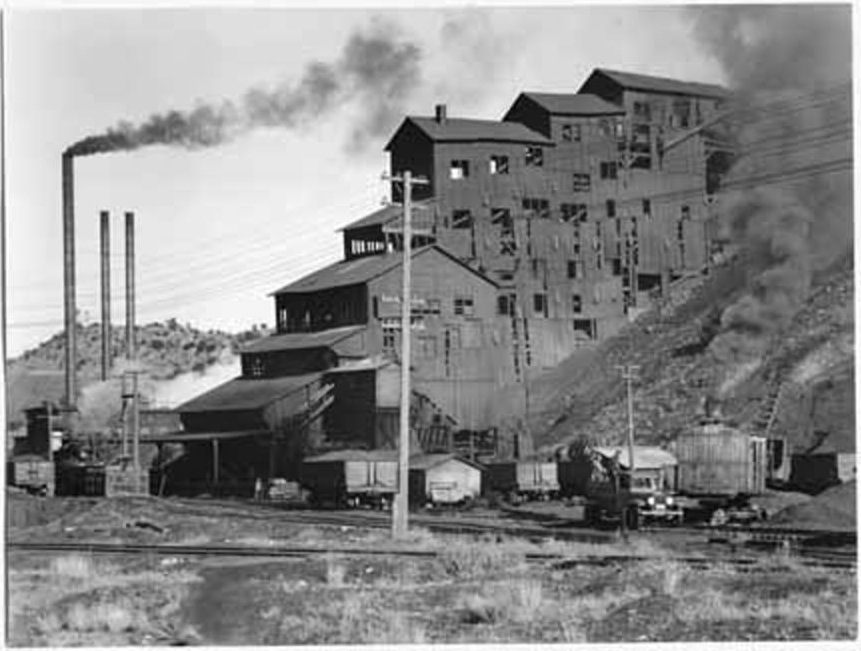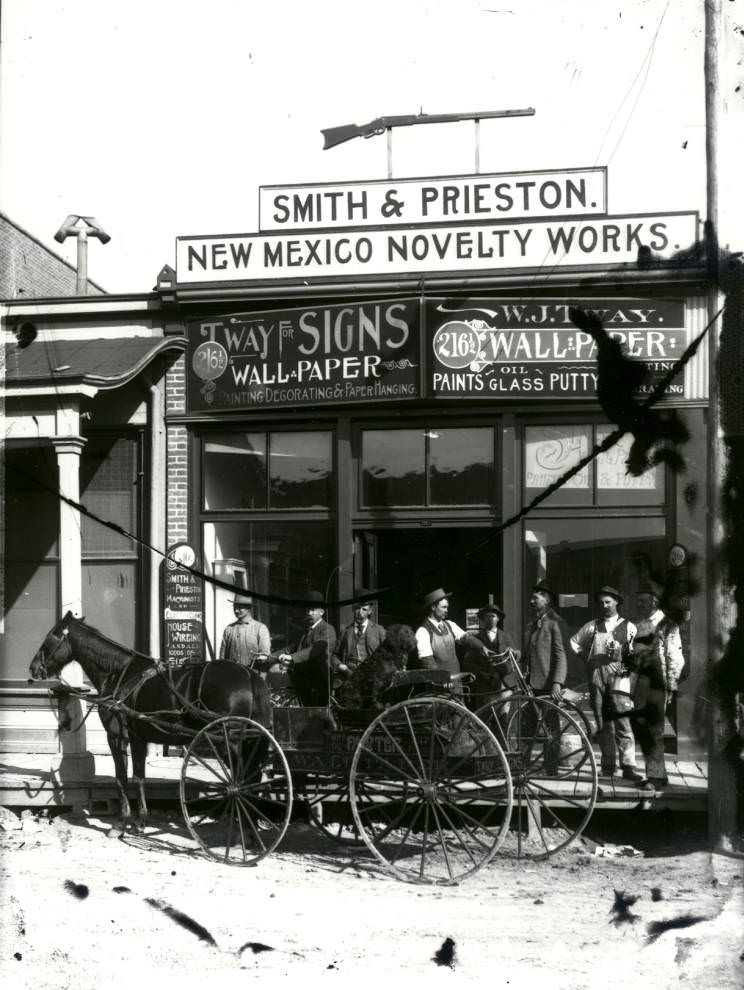Spanish-American women replastering an adobe building in Chamisal, New Mexico, in 1940. Enjaradoras are traditional female mud plasterers, responsible for the annual replastering of adobe homes and buildings. This exterior plastering is necessary to protect adobe bricks from weather, and must be maintained regularly.
Read more...A 1940s postcard from the Moon Cafe at 2316 W. Central Avenue, Albuquerque, New Mexico. Typical of businesses on Route 66, signs in the windows advertise "Curios and Indian Jewelry." The back of the postcard reads "We Never Close. Dinner and short orders 24 hours a day. Eight first class Motels within two blocks."
Read more...Members of the Pecos Valley Bee-keepers Association at their meeting at Roswell, New Mexico, in October, 1910. This photo was published in the January 15, 1911, volume of “Gleanings in Bee Culture,” a monthly journal established in 1873 to promote beekeeping. The photo accompanied a report of the Pecos Valley group’s petition to the Eastern Railway of New Mexico for a lower rate on honey, as local producers were doing so well they wanted to ship further afield (the petition was later granted.) The full text of their petition was published in the journal and makes for interesting reading.
Read more...A photo from circa 1935 shows an anthracite coal breaker and power house buildings in Madrid, New Mexico. The history of mining in New Mexico goes back nearly five centuries. Lead mining in the 17th century gave way to coal and gold mines by the 19th. By the 1890s coal mining had become big enough to require a railroad spur to connect the area to the Santa Fe Railroad, and a seven-story anthracite coal breaker was built. Madrid became a Company coal town, with inhabitants living in prefab cabins shipped out from Kansas.
Read more...Interesting old photo of storefronts with fantastic examples of 19th-century signage, at 216 1/2 South Second Street in Albuquerque. The shops sharing the space are Smith & Prieston Machinists & Electricians, New Mexico Novelty Works, and W.J. Tway Signs, Wallpaper, Painting, Decorating & Paper Hanging. Several men stand on the wooden sidwalk, some dressed in overalls, some in suits, and one man wearing a shopkeep’s apron and sleeve stockings. A large dog sits in a horse-drawn buggy that bears more advertising for Tway the Painter.
Read more...
